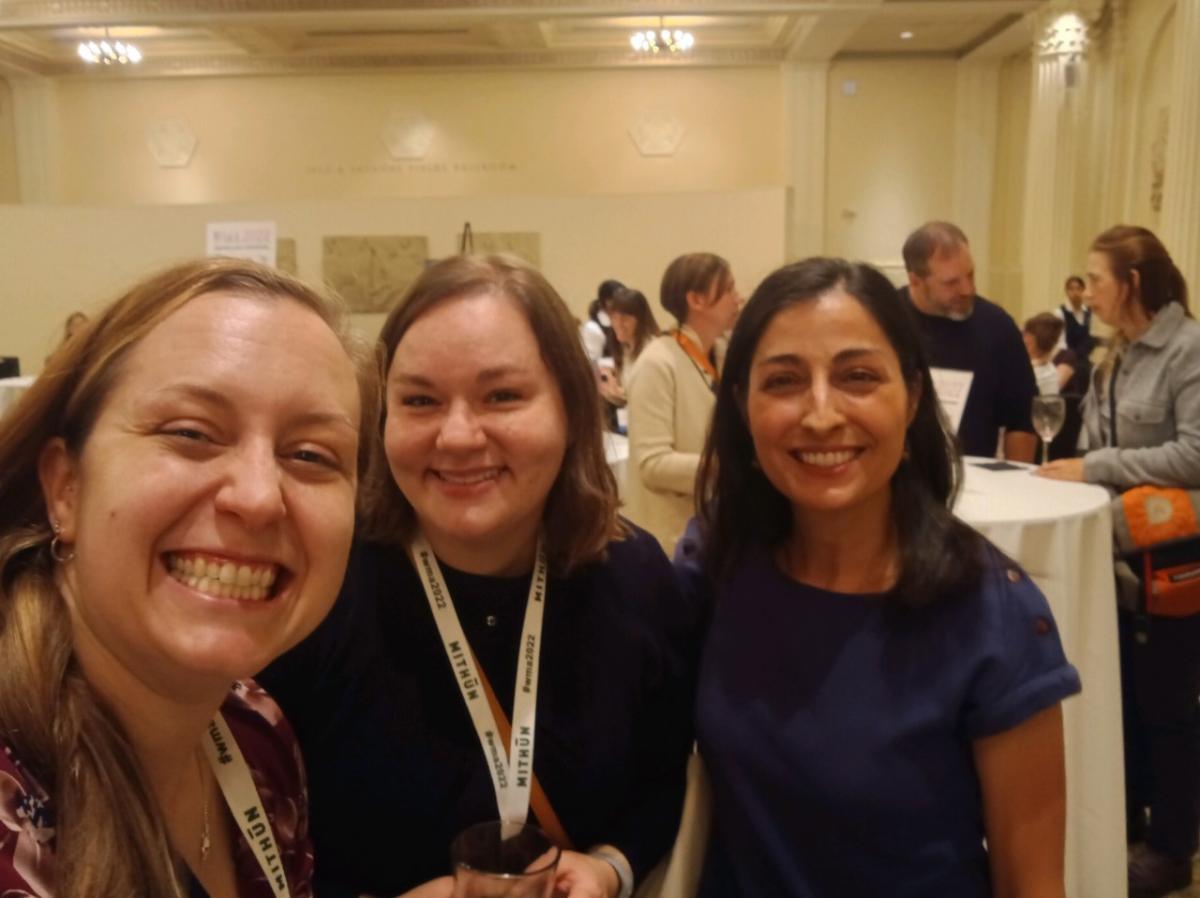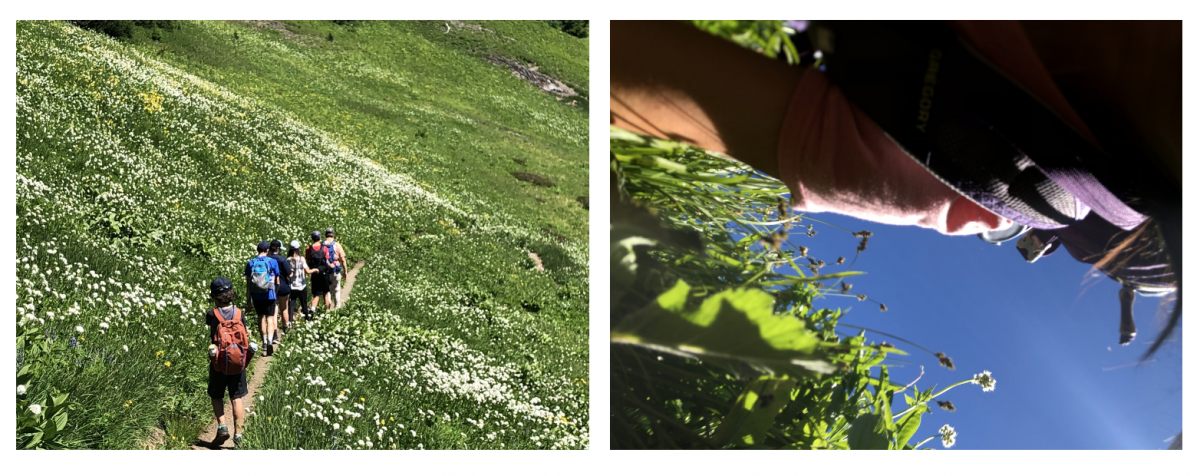Written by 2022 Wanda Chin Scholarship Recipient Amy Chaloupka
The last large public event I attended the weekend before the pandemic shut everything down in March 2020 was a painting symposium in Portland. So, it felt right returning to PDX for WMA’s annual meeting in October—my first large professional gathering in over two years.
A bit apprehensive to be thrust into social scenarios for four straight days, I took comfort in the familiarity of the structure, having attended the 2019 annual meeting in Boise. I was also excited to reconnect with regional friends and colleagues in person after two years of zooming.

Left to right: Danielle Knapp, Elizabeth Larew, and Amy Chaloupka enjoying the Shipper’s Party at the Portland Art Museum, October 2022.
As Boise was my first WMA experience, I felt more like an observer than a participant. This time around, and with the generous support of the Wanda Chin fellowship to make my attendance possible, I was all-in for the experience.
Excited by the theme of moving Forward, I was eager to assess and discuss models for improving the state of our field, and found the conversations this year to be rich, frank, and urgent. Most panels I attended were action-oriented with session leaders inviting audience participation beyond the typical post-discussion Q&A. On more than one occasion, presenters allowed for movement about the room, small group break-out sessions, and opportunities to workshop ideas. Many included wonderful resources via handouts or QR codes embedded in slides to dig into well after the four day event was over.
Keynote speaker Dina Bailey set the ‘active’ tone by illustrating guiding principles for change-making through her hiking adventures. I thoroughly connected with Bailey’s words on the challenges and possible solutions we work through in our organizations as she grounded them through her personal experiences. When Bailey recounted a fall she had on the trail, I looked down at the faded road rash still visible on the palms of my hands, the result of a tumble I took just a week prior to the conference. I was attempting to take a picture of my kids who were tromping through a mountain meadow ahead of me, and as I fumbled with my phone, I slipped on loose gravel and tumbled down the ledge we were hiking along. The photo I ended up with was a blurry picture of me, mid-fall, phone flying through the air. I was shocked to look down at my bloodied hands to see that this had happened in an instant, in a moment where I felt I was totally in control and comfortable with my surroundings. Perhaps too comfortable.

Expectation vs. Reality on a hike through Mt. Baker National Forest
Recalling this moment, I saw how Bailey related her similar unexpected injury to the rocky road of enacting change in museums. We have systems and processes we’ve grown accustomed to and it’s easy to nestle in and keep moving along the same well-trodden path. But for major systemic change to happen and to serve broader communities in sincerely inclusive ways, it’s necessary to walk an uneasy path and step away from comfort and complacency.
These thoughts swirled around in my head all weekend and were central to the conversation in session after session. I was grateful to learn more from the Burke Museum panelists as they outlined their decolonization strategies across decades of work. Their shift from consultation to true collaboration developed through the formation of a Native American Advisory Board and, in the words of Dina Bailey, “through listening, and moving at the speed of trust.” This has led to institutional change and improved engagement with Indigenous communities.
To build on these discussions, the session Beyond Land Acknowledgements provided many wonderful case studies, books, and resources outlining calls to action with meaningful ways to support Indigenous communities. From this panel I learned how our museum can shift our land acknowledgement from performative statement to a relationship document to be held accountable to.
Another resource for measuring accountability came from the presenters at Museums and Race. Their powerful breakout session tasked attendees to flip the script and imagine absolute worst-case scenarios of complacent organizations in order to envision positive change. They paired this exercise with methods for serious internal evaluation to take home in the form of a report card for measuring where an organization currently stands and a rubric to track progress.
I am incredibly grateful for the opportunity to have attended the WMA annual meeting through the support of the Wanda Chin Scholarship. The generous information and tools shared throughout the conference sent me home energized and encouraged to walk with care down the uneasy path. I’m sure missteps will happen along the way, but it’s absolutely worth the hike.
Amy is curator of art at the Whatcom Museum in Bellingham, Washington. With an MFA in sculpture, Amy is a maker at heart and endlessly curious about the material and conceptual explorations of artists. When she’s not at the museum, she enjoys a friendly (and competitive) game of pickle ball with her twin sister.
Add new comment